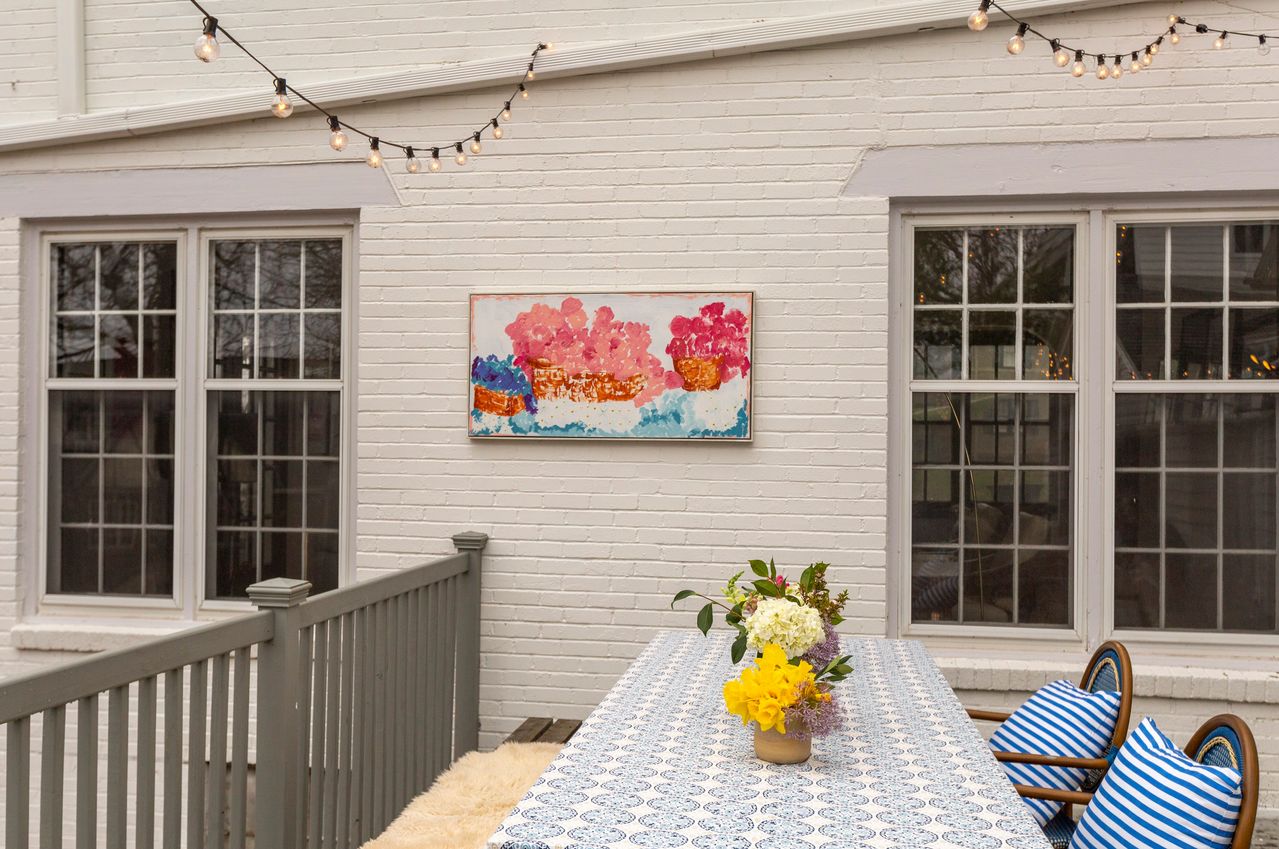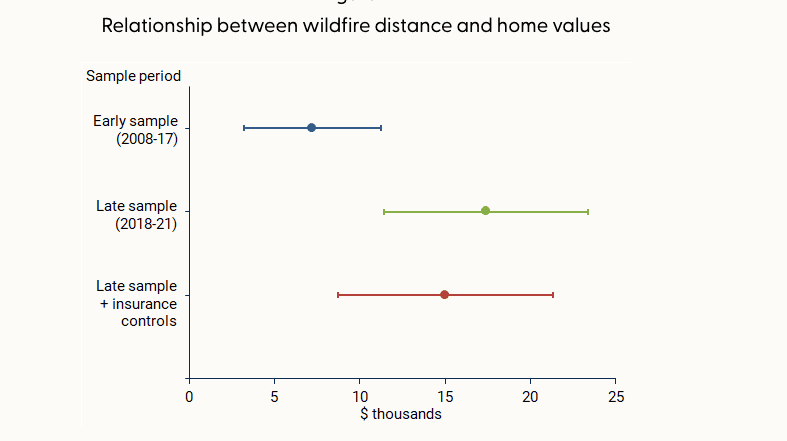How To Spiff Up Your Outdoor Area With Art
The next step in decorating your outdoor space with personality to entertain? Filling it with paintings, sculptures and more.
The next step in decorating your outdoor space with personality to entertain? Filling it with paintings, sculptures and more.
You might be eyeing your outdoor area, wishing it were a bit more remarkable, a bit less overfamiliar. Festive, even.
One answer, say interior designers, is art, a therapeutic fix for spaces we’ve spent too much time in. Emily B. Collins, director of the New York Design Center’s Gallery at 200 Lex, has noticed intense interest in “items that contribute to a beautiful, functional setting outdoors.”
Homeowners and design pros are discovering that outdoor spaces are loaded with blank walls waiting to be decked out with paintings, mirrors, sculpture, decorative tiles—the same arsenal of art you’d use inside.
To liven up her outdoor’s seating area, Liz Lidgett, a gallery owner in Des Moines, Iowa, hung a painting on a nearby exterior white-brick wall with screws and wire. The glassless, wood-framed painting of pink and blue florals (above) was a $10 secondhand-store score, preserved with a coat of Rust-Oleum’s water-repelling NeverWet to withstand the weather. Guests, she said, seem to enjoy the unexpected element.
In Palm Springs, Tamara Hill, who rents her midcentury home on Airbnb, saw a blank canvas in the cement bottom of her kidney-shaped pool. She commissioned Brooklyn artist and designer Alexandra Proba to paint her trademark madcap—and suitably biomorphic—designs under the waterline. “It’s magical,” said Ms. Hill. “It brings the whole style of my home together far more than I imagined.”
Don’t have the coin to fly in an artist to paint a mural on a wall, fence or pool bottom? You can search for experienced artists near you on sites such as thumbtack.com. Plug in your postcode, view past projects, read client reviews and get in touch.

Wall sculptures of metal, wood or fired clay can dress up naked swaths of siding and fences. For a home in Los Angeles, New York designer Miles Redd invited ceramic sculpture artist Carlos Otero to reimagine a blank courtyard wall. “It called for something spectacular,” said Mr. Redd. The artist delivered a cream-coloured conglomeration of textures that evokes the surface of the moon, inspired by bas-relief panels of the 1960s architecture in Buenos Aires, Mr. Otero’s childhood home.
“Ceramics can live safely outdoors in most climates given some degree of protection,” said Juliet Burrows of New York’s Hostler Burrows Gallery, which represents Mr. Otero. History is full of examples of ceramics-ornamented architecture, she noted.
Dallas designer Jean Liu likes the midcentury modern metalwork of American duo Curtis Jere, which she installed in the lounge space of a client’s covered outdoor area. These cost thousands, but more than passably chic vintage wall sculptures can be found on sites like Etsy and eBay for less than $300.
Bryan McKenzie, a landscape designer in Jacksonville, Fla., is a fan of tiles and “exquisitely patterned walls.” He dolls up vertical surfaces with disks, squares and other polygons from G. Vega Cerámica, in Marbella, Spain. Against whitewashed surfaces, he hangs the Moroccan-style tiles glazed in shades of blue and green.
Another pro move is to hang a tapestry or fibre art in an alfresco space. Occasionally, on a side patch of her Fairfield, Conn., yard that’s visible from the street, Pam Poling exhibits one of her handmade quilts, which dangle from a stand she Macgyvered using photo equipment. The fair-weather exhibition started as a way to inspect her sewing in a natural light and snap a clean photo to share. Now, she says, neighbours look forward to the rotating show of coverlets, whose geometry and bold colours vibrate against her verdant landscaping.
In the front yard of her Phoenix, home, artist Kyllan Maney draped a tree with a necklace of solar lanterns she hand painted with whimsical stripes and dots. “Some of my neighbours have had visitors ask if we are having a party.”
Reprinted by permission of The Wall Street Journal, Copyright 2021 Dow Jones & Company. Inc. All Rights Reserved Worldwide. Original date of publication: April 7, 2021.
 Copyright 2020, Dow Jones & Company, Inc. All Rights Reserved Worldwide. LEARN MORE
Copyright 2020, Dow Jones & Company, Inc. All Rights Reserved Worldwide. LEARN MORE
What a quarter-million dollars gets you in the western capital.
Alexandre de Betak and his wife are focusing on their most personal project yet.
Report by the San Francisco Fed shows small increase in premiums for properties further away from the sites of recent fires
Wildfires in California have grown more frequent and more catastrophic in recent years, and that’s beginning to reflect in home values, according to a report by the San Francisco Fed released Monday.
The effect on home values has grown over time, and does not appear to be offset by access to insurance. However, “being farther from past fires is associated with a boost in home value of about 2% for homes of average value,” the report said.
In the decade between 2010 and 2020, wildfires lashed 715,000 acres per year on average in California, 81% more than the 1990s. At the same time, the fires destroyed more than 10 times as many structures, with over 4,000 per year damaged by fire in the 2010s, compared with 355 in the 1990s, according to data from the United States Department of Agriculture cited by the report.
That was due in part to a number of particularly large and destructive fires in 2017 and 2018, such as the Camp and Tubbs fires, as well the number of homes built in areas vulnerable to wildfires, per the USDA account.
The Camp fire in 2018 was the most damaging in California by a wide margin, destroying over 18,000 structures, though it wasn’t even in the top 20 of the state’s largest fires by acreage. The Mendocino Complex fire earlier that same year was the largest ever at the time, in terms of area, but has since been eclipsed by even larger fires in 2020 and 2021.
As the threat of wildfires becomes more prevalent, the downward effect on home values has increased. The study compared how wildfires impacted home values before and after 2017, and found that in the latter period studied—from 2018 and 2021—homes farther from a recent wildfire earned a premium of roughly $15,000 to $20,000 over similar homes, about $10,000 more than prior to 2017.

The effect was especially pronounced in the mountainous areas around Los Angeles and the Sierra Nevada mountains, since they were closer to where wildfires burned, per the report.
The study also checked whether insurance was enough to offset the hit to values, but found its effect negligible. That was true for both public and private insurance options, even though private options provide broader coverage than the state’s FAIR Plan, which acts as an insurer of last resort and provides coverage for the structure only, not its contents or other types of damages covered by typical homeowners insurance.
“While having insurance can help mitigate some of the costs associated with fire episodes, our results suggest that insurance does little to improve the adverse effects on property values,” the report said.
While wildfires affect homes across the spectrum of values, many luxury homes in California tend to be located in areas particularly vulnerable to the threat of fire.
“From my experience, the high-end homes tend to be up in the hills,” said Ari Weintrub, a real estate agent with Sotheby’s in Los Angeles. “It’s up and removed from down below.”
That puts them in exposed, vegetated areas where brush or forest fires are a hazard, he said.
While the effect of wildfire risk on home values is minimal for now, it could grow over time, the report warns. “This pattern may become stronger in years to come if residential construction continues to expand into areas with higher fire risk and if trends in wildfire severity continue.”